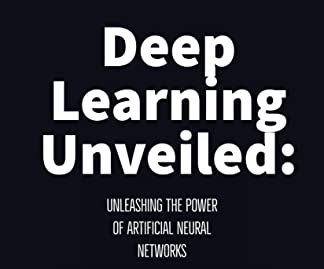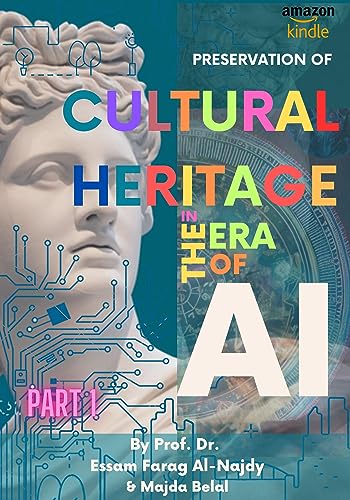In the world of artificial intelligence, neural networks have emerged as a game-changer. Among them, deep learning stands out as a revolutionary approach that has redefined the boundaries of what AI can achieve. In this blog post, we’ll take a deep dive into the fascinating world of deep learning, exploring its principles, applications, and the incredible potential it holds.
Unraveling the Basics
At its core, deep learning is a subset of machine learning, which, in turn, is a field within artificial intelligence. Deep learning models are inspired by the human brain’s neural networks, attempting to replicate the way we learn and make decisions. To understand deep learning, let’s break down some of its fundamental components.
Artificial Neurons: In deep learning, the basic building block is the artificial neuron, or perceptron. These artificial neurons take in inputs, apply weights to those inputs, sum them up, and then pass the result through an activation function. This process is designed to mimic the way biological neurons in our brains process information.
Layers and Architecture: Deep learning models consist of multiple layers of interconnected neurons, forming what’s known as a neural network. These networks can be quite deep, with many hidden layers between the input and output layers, hence the term “deep learning.” The architecture of the network, including the number of layers and the connections between neurons, plays a crucial role in its performance.
Training and Learning: The heart of deep learning lies in training the neural network. During the training process, the model is exposed to a large dataset with known outcomes. It learns to adjust the weights and biases of its neurons to minimize the difference between its predictions and the actual outcomes. This process, known as backpropagation, involves iteratively fine-tuning the network until it becomes proficient at making accurate predictions.
The Power of Deep Learning
Deep learning has gained immense popularity and recognition due to its remarkable capabilities in various domains. Here are some areas where deep learning has made a significant impact:
Computer Vision: Deep learning has revolutionized computer vision, enabling machines to interpret and understand visual information. Convolutional Neural Networks (CNNs) excel at tasks like image classification, object detection, and facial recognition. This technology underpins applications such as self-driving cars, medical image analysis, and augmented reality.
Natural Language Processing (NLP): Deep learning has transformed the field of NLP, allowing machines to understand and generate human language. Recurrent Neural Networks (RNNs) and Transformers are commonly used architectures for tasks like language translation, sentiment analysis, chatbots, and voice assistants like Siri and Alexa.
Recommendation Systems: Deep learning plays a pivotal role in recommendation systems that power platforms like Netflix and Amazon. These systems analyze user behavior and preferences to provide personalized recommendations, enhancing user experiences and driving engagement.
Healthcare: Deep learning is making significant strides in healthcare, aiding in the early detection of diseases from medical images, predicting patient outcomes, and drug discovery. It holds the potential to save lives and reduce healthcare costs.
Autonomous Systems: Deep learning is at the core of autonomous systems like self-driving cars and drones. These technologies use neural networks to process sensor data, make real-time decisions, and navigate the environment safely.
Breakthroughs in Deep Learning
Deep learning has achieved remarkable breakthroughs in recent years, thanks to advancements in hardware, algorithms, and access to vast datasets. Some notable achievements include:
Image Generation: Generative Adversarial Networks (GANs) can create highly realistic images, artwork, and even deepfake videos. These networks consist of a generator and a discriminator, locked in a competitive game that leads to the generation of high-quality content.
AlphaGo: DeepMind’s AlphaGo made headlines by defeating the world champion Go player, Lee Sedol, in 2016. This demonstrated the power of deep reinforcement learning in mastering complex games.
Language Models: Models like OpenAI’s GPT-3 have demonstrated the ability to generate coherent and contextually relevant text. These models are capable of tasks ranging from language translation to content generation and have the potential to revolutionize content creation and automation.
Protein Folding: Deep learning models have made significant progress in predicting protein structures, a critical task in drug discovery and understanding diseases. The AlphaFold project, for example, has achieved groundbreaking accuracy in predicting protein folding.
Challenges and Ethical Considerations
While the potential of deep learning is awe-inspiring, it comes with its own set of challenges and ethical considerations:
Data Bias: Deep learning models can inherit biases present in the training data, leading to unfair or discriminatory outcomes. It’s crucial to address bias and ensure fairness in AI systems.
Data Privacy: The vast amount of data required for training deep learning models raises concerns about data privacy and security. Protecting sensitive information is a priority.
Interpretable AI: Deep learning models are often considered “black boxes” because it’s challenging to interpret their decision-making processes. Researchers are actively working on methods to make AI more transparent and understandable.
Ethical Use: As deep learning becomes more powerful, it’s essential to use it ethically and responsibly. Considerations about AI’s impact on jobs, privacy, and society must be addressed.
The Future of Deep Learning
The future of deep learning is incredibly promising. As researchers continue to push the boundaries of what’s possible, we can anticipate several exciting developments:
AI for Good: Deep learning will play a vital role in solving global challenges, from climate modeling and disaster response to healthcare and education. AI for good initiatives will harness the technology’s potential for the benefit of humanity.
Explainable AI: Efforts to make AI more interpretable will gain traction, leading to models that can explain their decisions in a human-understandable manner. This will be crucial for trust and accountability.
Robustness and Security: Enhancements in model robustness and security will make deep learning systems more resilient to adversarial attacks and safer for deployment in critical applications.
Edge Computing: As AI moves closer to the edge, we’ll see more intelligent devices and systems that can process data locally, reducing latency and dependence on cloud resources.
Human-Machine Collaboration: The synergy between humans and AI will grow stronger. We’ll see more applications where AI augments human capabilities, leading to innovative solutions and enhanced productivity.
In Conclusion
Deep learning has opened up a world of possibilities in artificial intelligence. Its ability to process vast amounts of data, learn from it, and make complex decisions is transforming industries and shaping the future. While challenges and ethical considerations must be addressed, the potential benefits of deep learning are immense.
As we continue to explore the depths of deep learning, we must do so with a commitment to responsible development and ethical use. By harnessing the power of neural networks and deep learning, we have the opportunity to create a future where AI enriches our lives, solves complex problems, and opens new frontiers of knowledge and innovation.





